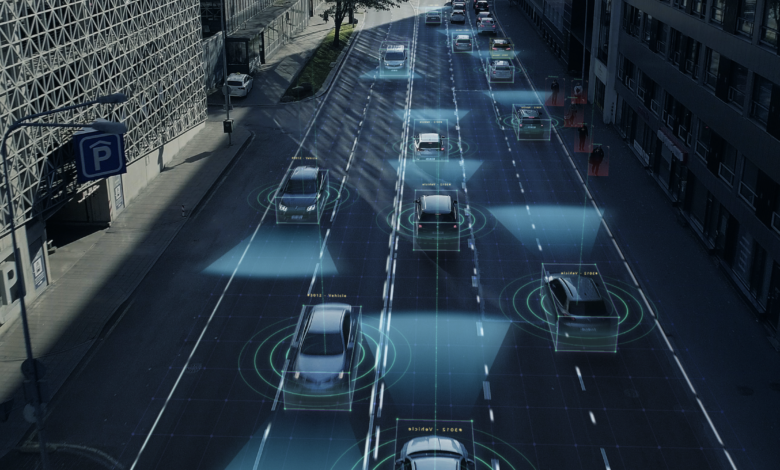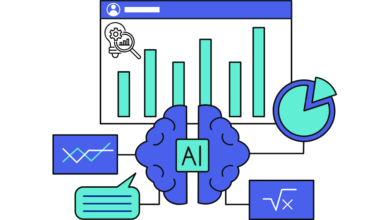
In today’s world, AI helps power everything from iPhones to self-driving cars — and it helps governments across the world with a variety of tasks.
How Governments Use Artificial Intelligence
AI itself is neither good nor bad — it’s simply a tool people can use to make their lives easier. True, there are cases when authority figures use AI for nefarious reasons, like espionage or deep fakes, but the everyday reality is a lot more nuanced. Here’s how administrations at city, state, and federal levels use it on a daily basis.
Tracking the Spread of Disease
In December 2019, just as people were wrapping up their Christmas vacations, an AI algorithm called BlueDot flagged a potential problem. It had noticed an outbreak of pneumonia cases near a Chinese market, echoing what many doctors had already pointed out, and predicted the disease would spread internationally. The World Health Organization announced the discovery of COVID-19 just a few days later. But what if governments had acted faster?
COVID-19 illustrated the importance of tracking the spread of disease. AI software is crucial for disease prevention and treatment alike, helping governments decide where to allocate resources and when to warn people of an outbreak.
AI can uncover how a virus operates, such as if it’s airborne or spread via direct contact. It can detect how many other people an individual typically infects. On the logistics side, AI can help determine where to send vaccines and coordinate shipments of goods to grocery stores and pharmacies.
Plus, AI can comb through social media to see who has and has not been vaccinated, predicting where the next outbreaks will occur. Healthcare personnel can then relocate to vulnerable areas to mitigate the crisis.
Identifying Criminals
With the aid of public cameras equipped with facial recognition, governments can use AI to pick out individual faces in a crowd. This technology can present an ethical gray area — are people comfortable being analyzed like that? Facial recognition can sometimes help solve crimes, but it isn’t perfect.
Police lineups have an infamous track record of inaccuracies leading to wrongful detainments. Some studies have found an accuracy level of around 65%, with over 70% of DNA exoneration cases being caused by false eyewitness testimonies. A camera isn’t the perfect witness, but it’s close. Timestamped photos are a much better piece of evidence than a human victim’s recall of a person’s face.
While facial recognition software often gets it right, the consequences can be drastic when it doesn’t. As of 2020, police have arrested at least three people by mistake due to incorrect facial recognition, all of them black men.
The technology might best be used in concert with other evidence to help compile a case. So far, it isn’t accurate enough to use in isolation and shows racial biases.
Managing Government Documents
Governments are responsible for storing birth certificates, marriage licenses, tax records and much more. Keeping paper copies of every file — going back hundreds of years, no less — requires an enormous amount of resources. It would also be easy to misplace documents or lose them in a fire.
Instead, many governments around the world now use cloud-based, digital document management systems to keep track of their most crucial files. This type of AI software improves data security and streamlines the file retrieval process.
Predicting Traffic Conditions
In 2015, the G4 Beijing-Hong Kong and Macau Expressway experienced a nightmarish traffic jam. As hundreds of millions of people headed home after a holiday, they found themselves gridlocked on the 50-lane highway for hours. It wasn’t the world’s longest traffic jam — that honor goes to a 2010 incident on China’s National Highway 110 — but it was notable because drones captured footage of the event. The panic-inducing photos made headlines and went viral on social media.
AI could have predicted the issue. Taking into account the holiday, local population and size of the road, it may have warned people to stay at their relatives’ homes just a little while longer. AI software could comb through social media posts to look for keywords like “stuck” or “traffic jam” to flag the event.
Many governments use AI traffic-prediction software to great effect. The data these programs gather can paint a picture of traffic conditions over time, helping drivers stay off the road during rush hour or take alternate routes around an accident. Additionally, governments can use the data to decide which roads to expand or reroute.
Creating Real-Time Translations
Speech recognition software is constantly improving. AI speech translation services enable people to communicate in real time, minimizing frustration and improving speed during emergencies.
For example, paramedics can use an AI-based translator on their phones to communicate with a foreign tourist, quickly determining that he’s allergic to peanuts. Translation services during sports events or town hall meetings allow more people to participate in the community.
The Many Uses of Government AI
Artificial intelligence is still a relatively new technology. As AI finds its footing, it will have more applications and will likely be integrated into every government job in the world. Well, most of them, anyway — AI can’t replace construction workers or firefighters, of course, and even the most technologically advanced jobs still benefit from human touch.
Instead of relying completely on AI, governments should use it as a tool to improve people’s lives. Time will tell how artificial intelligence will shape society.



